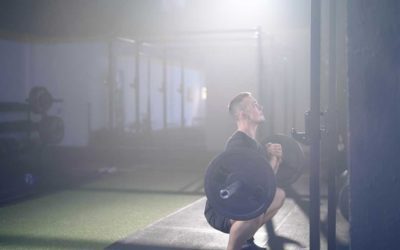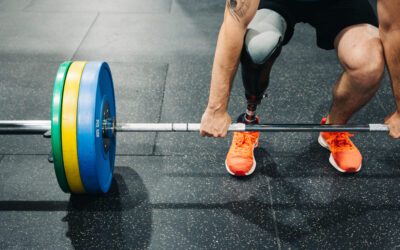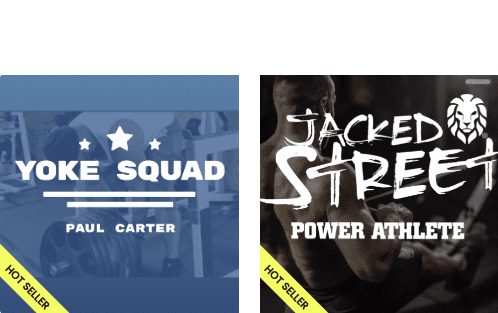How Age Affects Your Training & What To Do About It

Your body naturally changes/slows down with age – there’s no denying that. But being aware and making some subtle changes to your training slows down that process.
Marc Lavallee has trained Canadian military units in the Search and Rescue Technician (SAR-Tech) program along with members in their active duty and selection phases. He currently coaches for a policing agency. Here, he outlines what changes to expect in your training and how to embrace your masters athlete status.

Change the Way You Train
It’s Time. Embrace Your Masters Athlete Status.
All of these factors affect training adaptations and injury risk.
Don’t resist the natural change that comes with age. I, too, am currently considering my own age now when it comes to training. You’re now a wiser, more experienced version of yourself with a deeper knowledge and understanding of your body.
It’s time to start considering the unique changes you need to make to your training that differ from your younger self. It’s time to embrace your masters status.
Check Yourself Before You Wreck Yourself
I recommend everyone get a proper assessment before starting any training program.
It’s essential to assess your current fitness level, health status, and any pre-existing conditions or injuries. A well-thought evaluation identifies areas of weakness or imbalances that need to be addressed in your training program.
It’s ideal to see a seeing a physical therapist/athletic trainer/coach to do this assessment, but if you’re limited on time and money, try out these seven at-home exercises that test your flexibility, strength, and endurance in under 20 minutes:
Use Resistance Training to Build Strength
Resistance training is crucial for all masters athletes to maintain muscle mass, bone density, and strength.
The loss of muscle mass and strength is a natural consequence of aging that often leads to a decline in overall functionality. Because of this, prioritizing strength in your training program (regardless if you’re an endurance athlete or strength athlete) is paramount to continue training at your current level.
Aim for big bang-for-your-buck exercises like squats, lunges, deadlifts, chest press, push-ups, pull-ups, rows, etc.
Keep Up Your Cardio
Cardio is essential for maintaining your cardiovascular health, improving endurance, and reducing the risk of chronic diseases such as heart disease, diabetes, and obesity.
Strength athletes – I’m looking at you here. You need to recognize and prioritize cardio as you age.
Aim to perform moderate-intensity cardio exercise for at least 150 minutes per week or vigorous-intensity cardio exercise for at least 75 minutes per week.
Prioritize Recovery
Recovery is crucial for all athletes, but masters athletes in particular need to pay attention here. Aging often impairs recovery and increases your risk of injury.
Right away you may be thinking about all the fancy tech and gadgets needed to prioritize your recovery. But, you need to nail the basics first. Adequate sleep, proper nutrition (calories, carbohydrates, protein and hydration), and active recovery methods (like foam rolling and stretching) are the biggest factors to proper recovery.
Be aware of how many rest days and deload weeks you include in your recovery. Including these in your training program also aids in your recovery.
Stay Flexible & Mobile
These two are essential for maintaining joint health and reducing the risk of injury.Incorporating stretching and mobility exercises (such as yoga, Pilates, or foam rolling) improves your flexibility and mobility.
Put extra emphasis on areas specific to you – addressing areas of limited mobility or tightness is crucial for your longevity. Common trouble areas for many athletes as they age are hips and shoulders, so be sure to check your mobility/strength in those areas!
Remember to always adjust your training program based on your individual needs. Masters athletes have varying levels of fitness, goals, health status, and past/current injuries.
Find Your Perfect Training Plan
Sometimes all you need to reach your destination on your fitness journey is an expert guide. We've got you covered. Browse from thousands of programs for any goal and every type of athlete.
Try any programming subscription free for 7 days!
Related articles
How To Zercher Squat: One Exercise To Rule Them All
I have a secret weapon exercise that will get us really close; it has a lot of bang for its buck. It builds massive quads, big glutes, a wide back, and some awesome biceps. Exactly what every athlete needs.
What Does Paralympic Strength Training Look Like?
Paralympians undergo rigorous training when preparing for the Paralympic Games. While the Paralympics only last about two weeks, getting ready takes place all year, as these athletes are among the most dedicated in the world. Here’s how people with disabilities...
Your Guide to Passive Recovery Strategies
What is Passive Recovery? I don’t think that there exists a complete guide for athletes that tackles the underrated topic of “Recovery-Regeneration” strategies. I plan to disclose a majority of the scientific and practical information that I know of on this topic and...

Join the community
Sign up for the latest training news and updates from TrainHeroic

About TrainHeroic
Made with love, sweat, protein isolate and hard work in Denver, CO
© 2023 TrainHeroic, Inc. All rights reserved.






